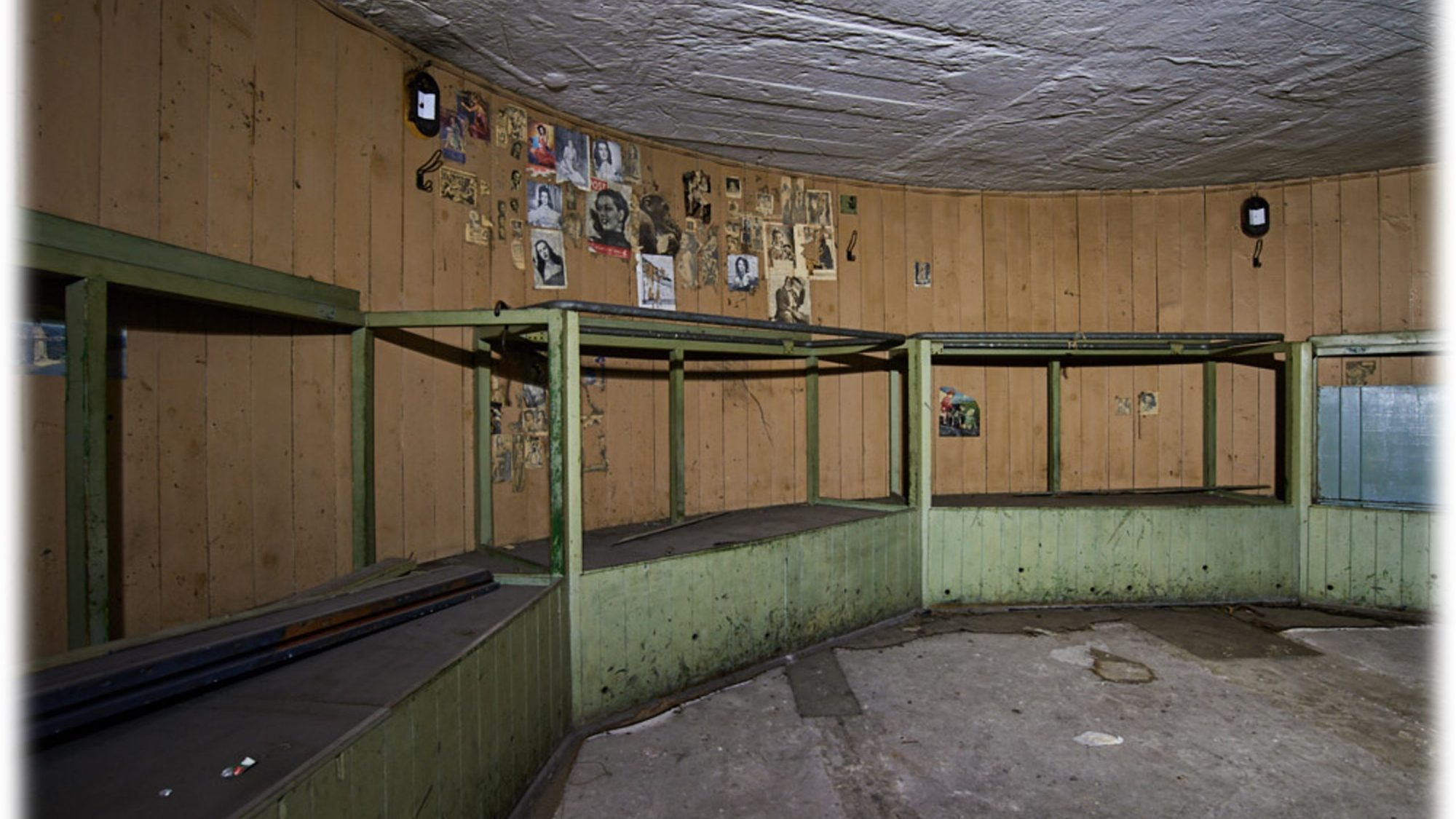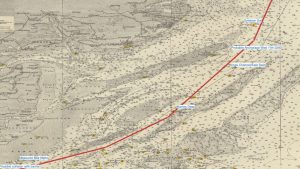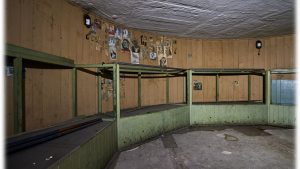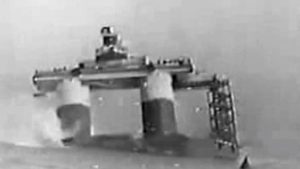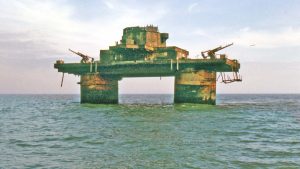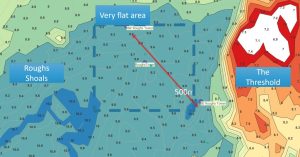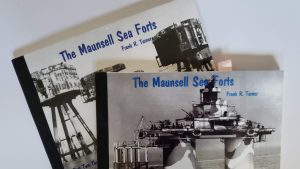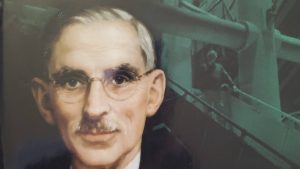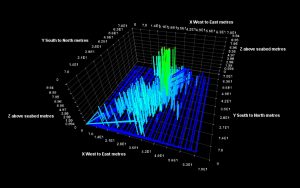After her Maiden Voyage and Grounding at the Roughs Shoals Site here is a view of the interior and operation of the Tower.
The towers were broadly identical, 22ft wide inside with seven decks, A to G. Each Fort was manned by 90 Marines, 30 Sailors and 3 officers working six-week tours of duty. Their shore base was HMS Badger at Harwich, shared with Fort U2 Sunk Head which would be positioned a few weeks later. For illustration, photographs from Knock John have been used since this was identical to Roughs and was not modified by later use.
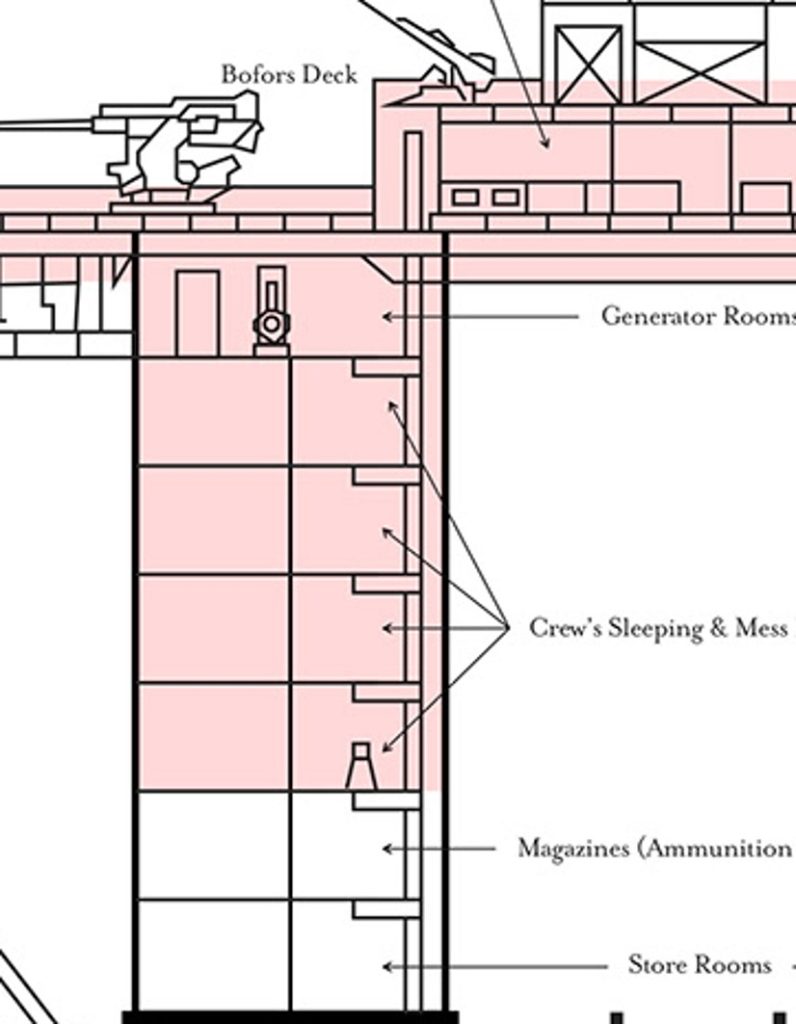
Ammunition Lift
There was a lift shaft for stores and ammunition. Decks were accessed by ladders with hatches on the gun deck. A heating and ventilation system in the control deck cycled air through the towers. Originally the towers were painted with “Carbolastic” bitumen and camouflage, now gone on Roughs Tower. From the photos of Knock John everywhere still seems dry after nearly 80 years with no maintenance for many decades.
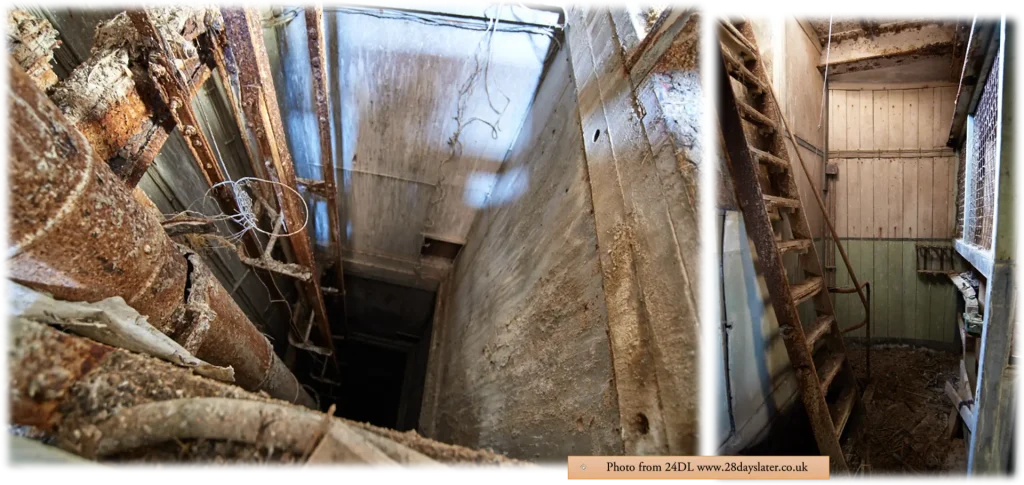
Crew Accommodation
Decks B, C, D and E were for crew accommodation. Two towers with 4 decks each with six double bunks gave 96 berths so some hot bunking may have been needed. When positioned some of these decks would be below the waterline some of the time. There were no portholes. The Admiralty had specified hammocks for the men, but Maunsell, in one of his several disagreements with them, insisted on bunks. The later Army forts had hammocks and looked less cosy.
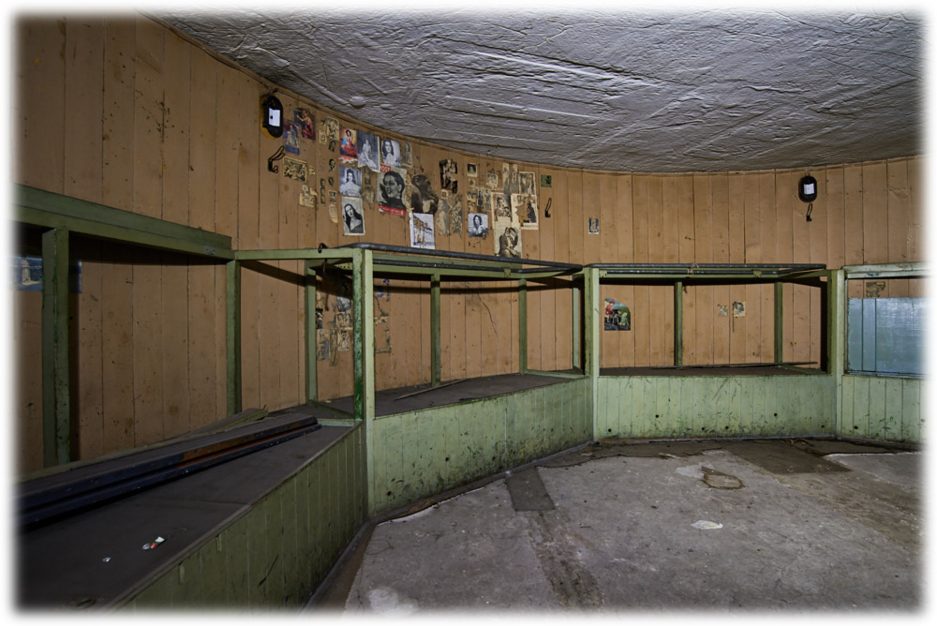
A clever feature of Maunsell’s design was the wooden shuttering used for the pouring of the concrete was left in situ and provided not only insulation but also a more pleasant surface than bare concrete. The Admiralty were unhappy with the use of the calming, green gloss paint which was normally only for officers. These photos from the Urban Explorers’ expedition to the undisturbed Knock John show the interior.
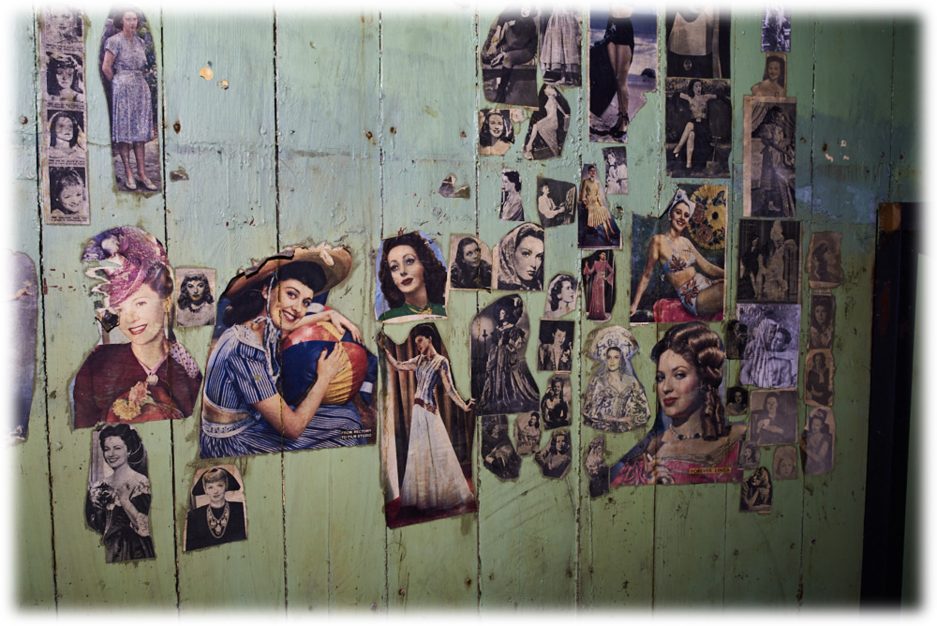
The Gun Deck
The Galley was in the Gun Deck accommodation along with sanitary facilities, divided by rank. Note the officers’ bath. This deck also included the CO’s cabin and the wardroom. Hung externally were two whaler style lifeboats and six Caley life-rafts. Under the gun deck, there was a Trinity House Fog Signal.
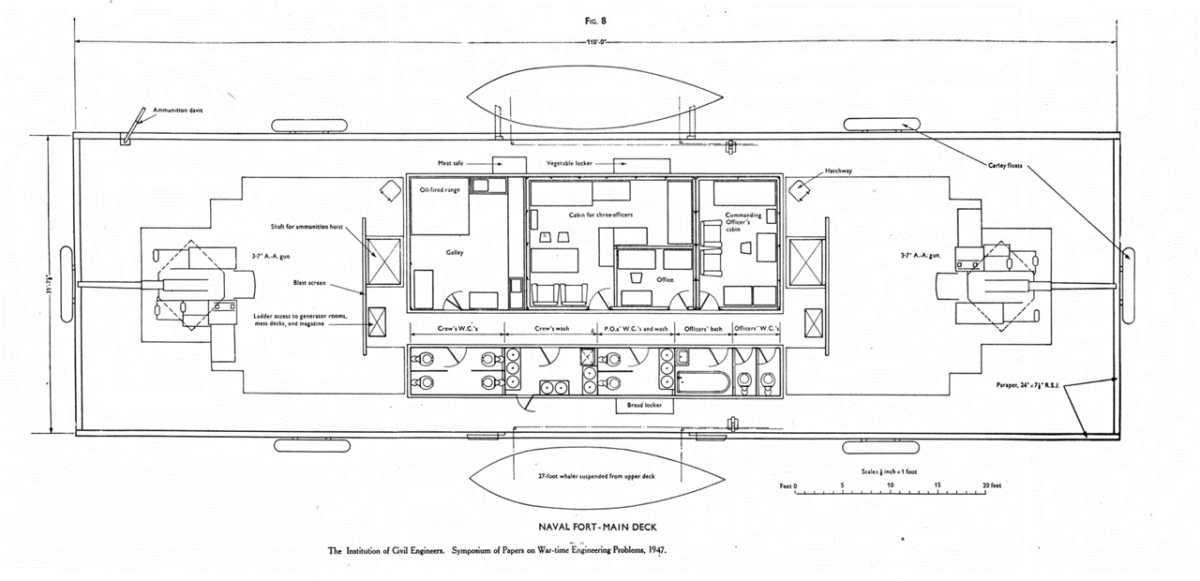
Of course, all supplies had to be winched aboard using the 10 cwt, or half-ton, crane on the Dolphin. What a clever idea it was to add it!
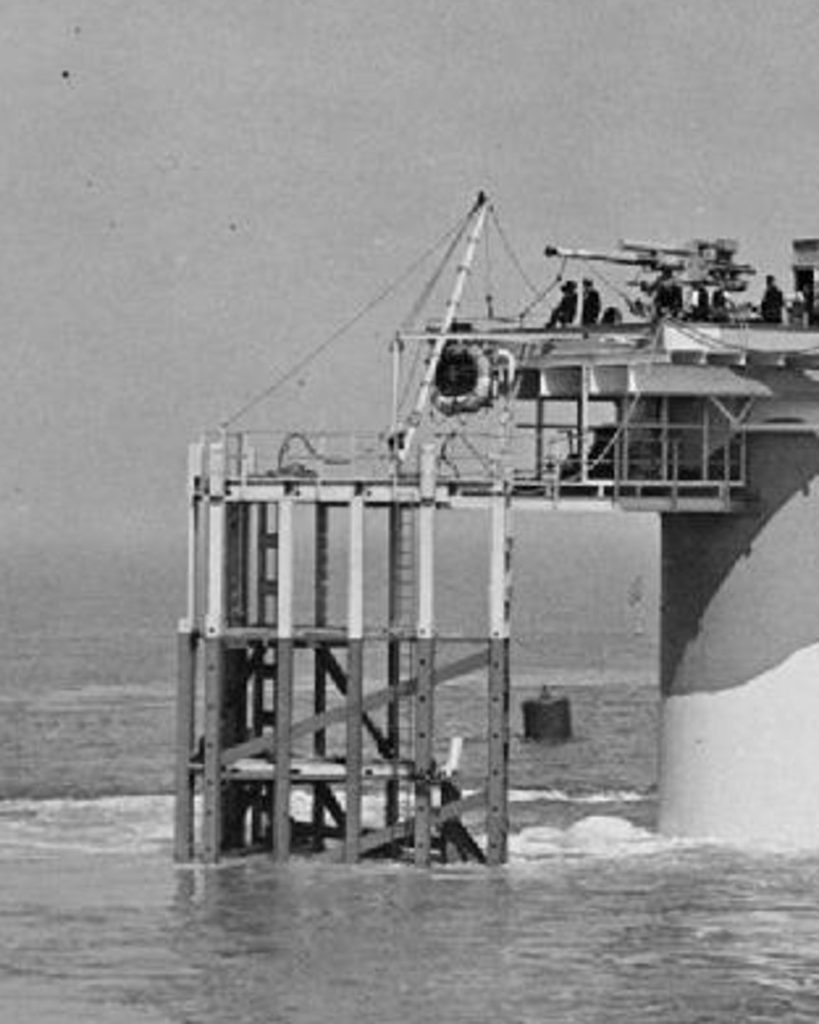
Below the Waterline
Before the fort goes into action it is worth visiting the base of the towers. These would be about 15 ft below mean sea level so decks G and F would be permanently under the water and E mostly submerged. Fuel for the generators and heaters was stored on Deck G. A bilge pump was there for drainage.
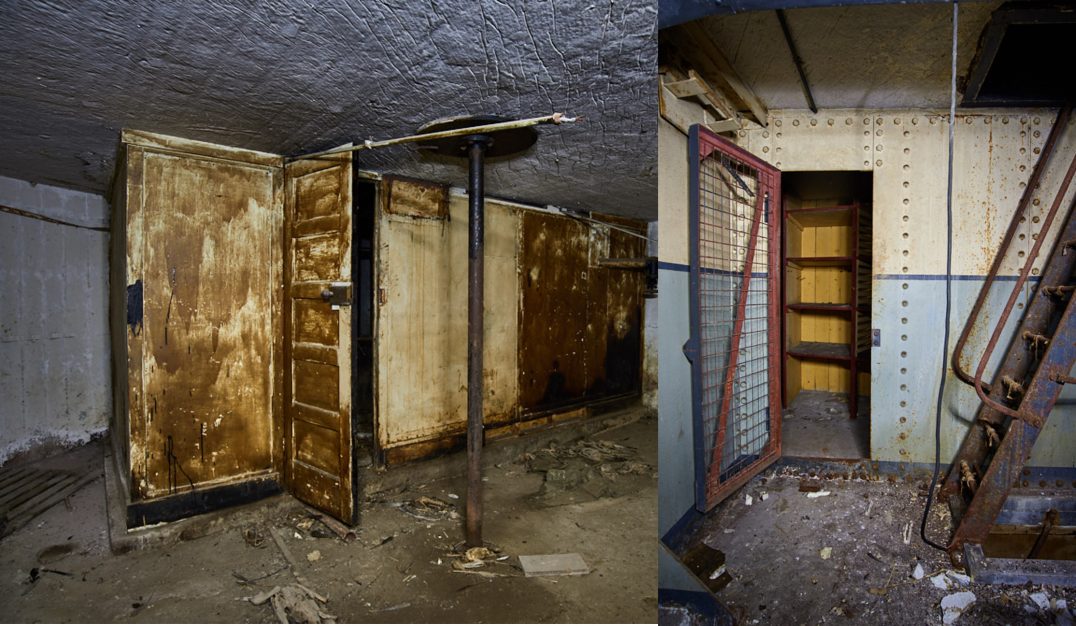
Shells were stored on Decks F and moved in boxes using the hoists which ran to hatches in the gun deck. The ammunition cases, obviously heavy, would, via the lift, emerge on the gun deck. F deck could be quickly flooded in case of fire.
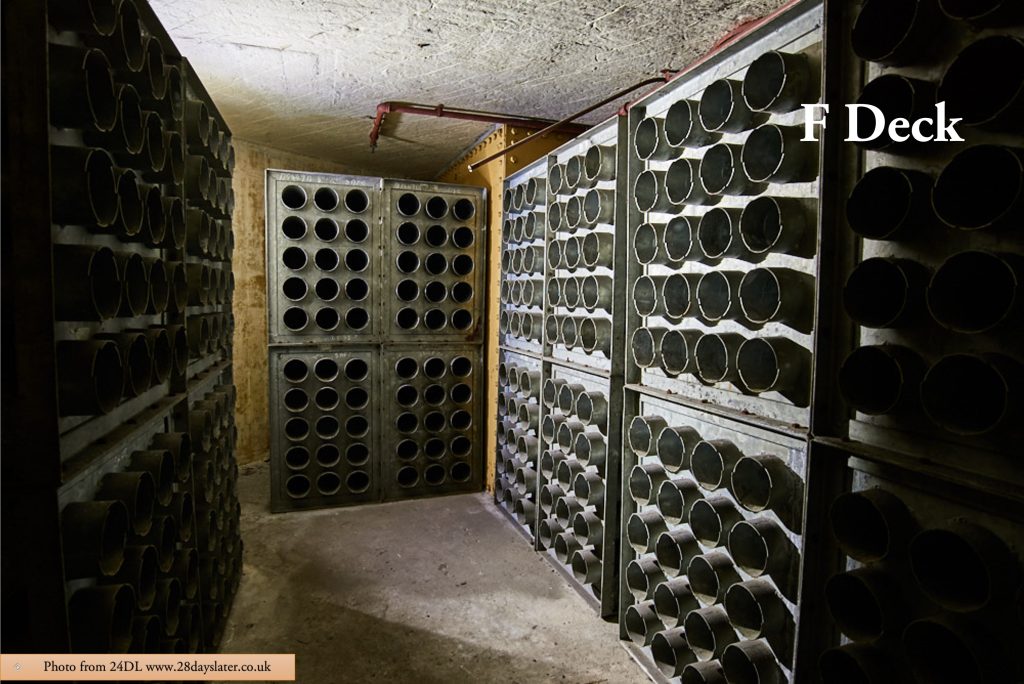
The Business End
The first action was five days later on the 15th of February when a Junkers 88 may have been downed. Further actions were reported in April, May, and August with two possible and one probable hit. Later in the War, the forts helped to down the incoming V1 Doodlebugs and accounted for about thirty of them. 1Weapons and Warfare site (site now gone?)
The main armament consisted of two 3.7” (80mm) Quick Firing Heavy Anti-Aircraft guns on the main deck. These fired 10 to 20 rounds per minute so with two of them working plus the Bofors one begins to see why so many men were needed. The guns had a range of about 7.5 miles up to a height of about 24,000 feet.
In its service career, Roughs Tower engaged ninety-six enemy aircraft of which six were claimed as kills plus another six V1s (Doodlebugs)2A total of 1784 3.7″ rounds and 1217 Bofors rounds were expended – J. P. (Julian P. ) Foynes, The Battle of the East Coast (1939-1945)..
One drawback of Maunsell’s design was that, like a ship, the guns could not sweep through a full circle reducing the concentration of fire. He remedied this in his later Army Fort design.
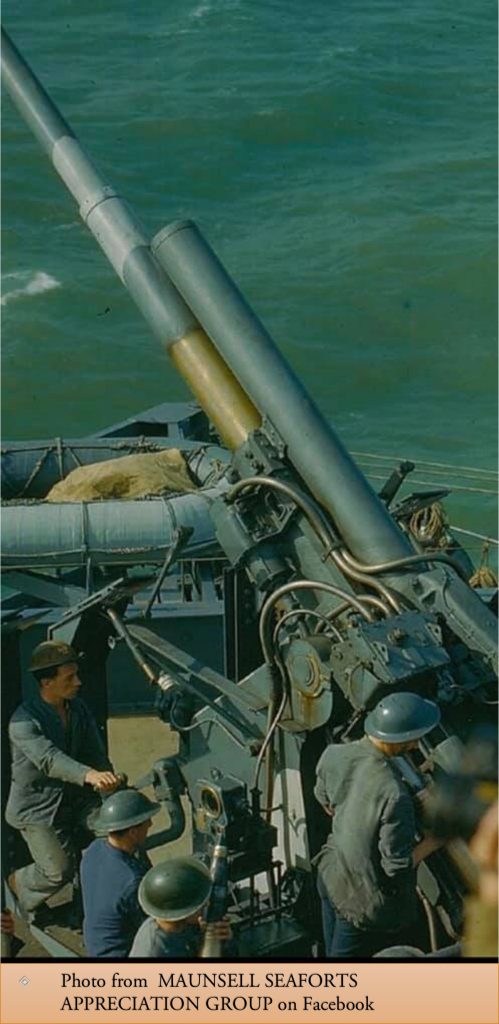
There were two 40mm Bofors guns on the Bofors deck just above. These guns were smaller but with a higher rate of fire. There does not seem to have been a lift up from the gun deck, so shells were probably carried up. The structure in the centre of this deck held the fresh and saltwater tanks along with the heating and ventilation system. Other equipment on this deck was used for target acquisition.
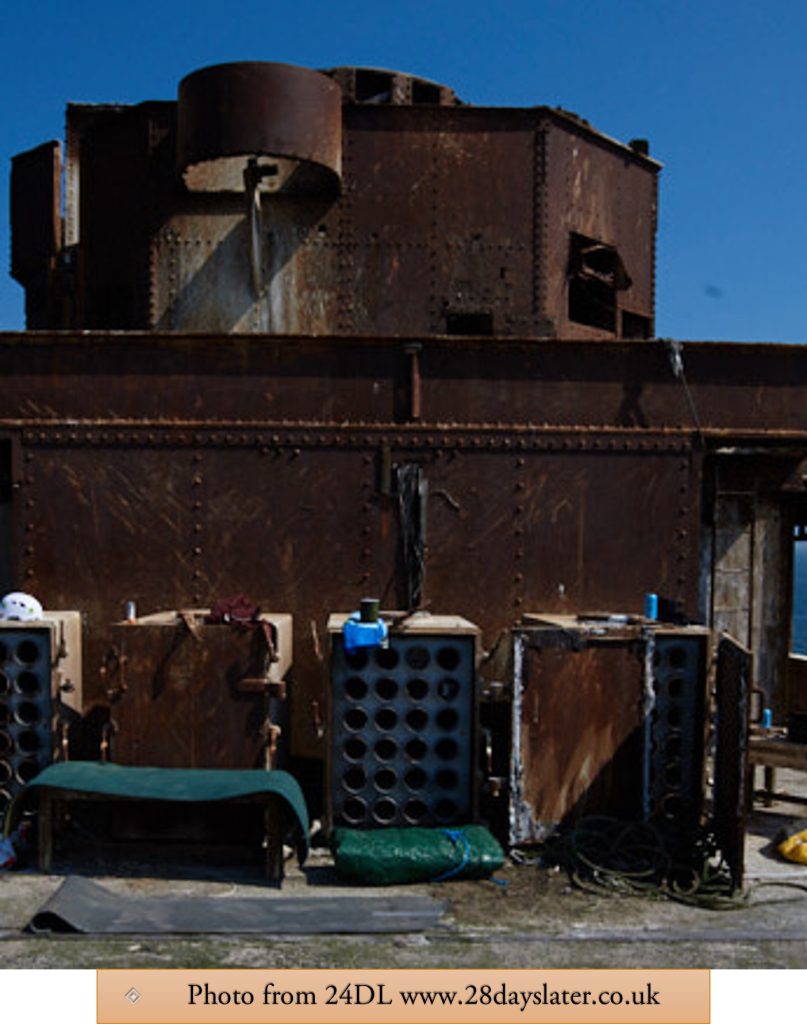
RADAR Guidance
A key feature was the RADAR guidance of the 3.7” guns. The RADAR guidance system was high technology for the time and is a topic in its own right. Dr Watson Watt was involved in the system. RADAR antennae were in or on a Perspex dome with wooden supports at the top of the structure. This system was used on ships such as HMS Hood. The range was, perhaps, 20 miles.
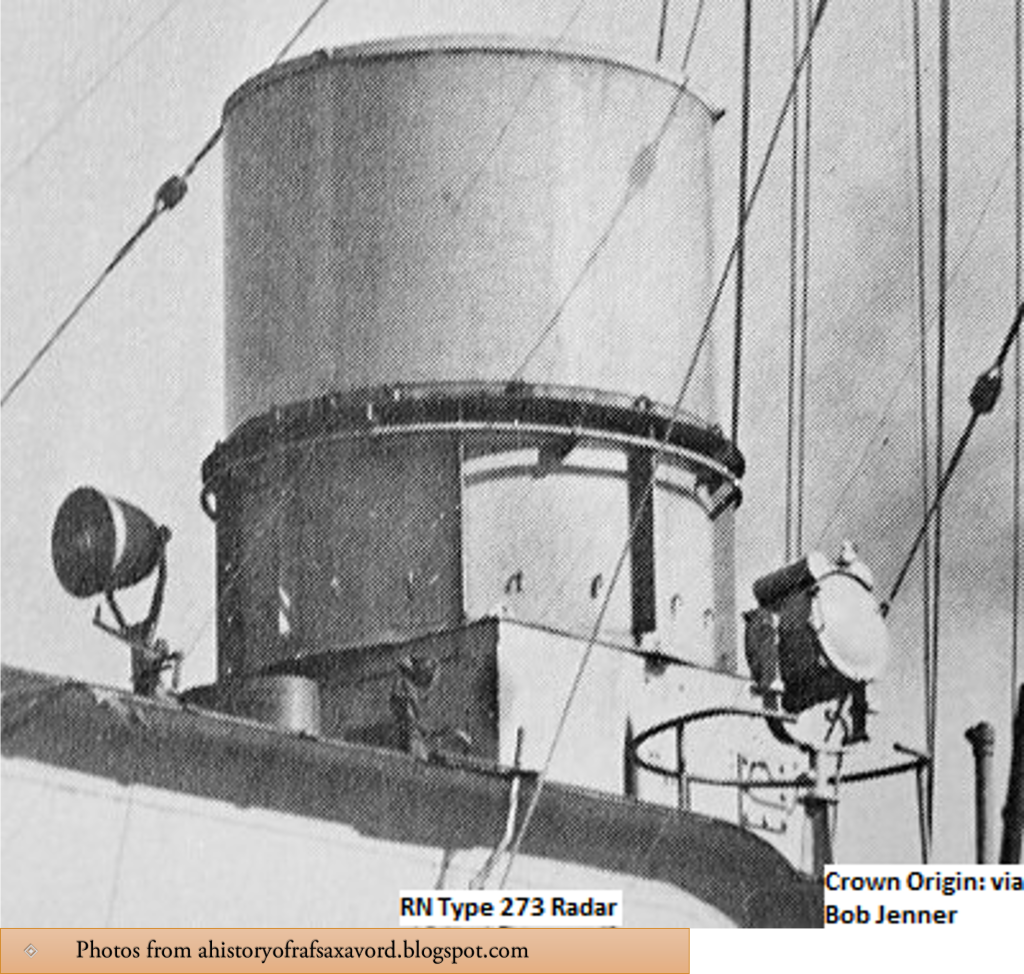
The Control Room under the dome had a plotting table, voice pipes for communication with the guns, and a telephone to the shore. It’s unclear what communication there was with other Forts, perhaps just radio. There were radio transceivers and a control panel for the Type 273 Radar Dishes and antennas. This room must have become hot with all those electronic valves. Around this small deck were positioned four pairs of Lewis machine guns as well as range-finding equipment.
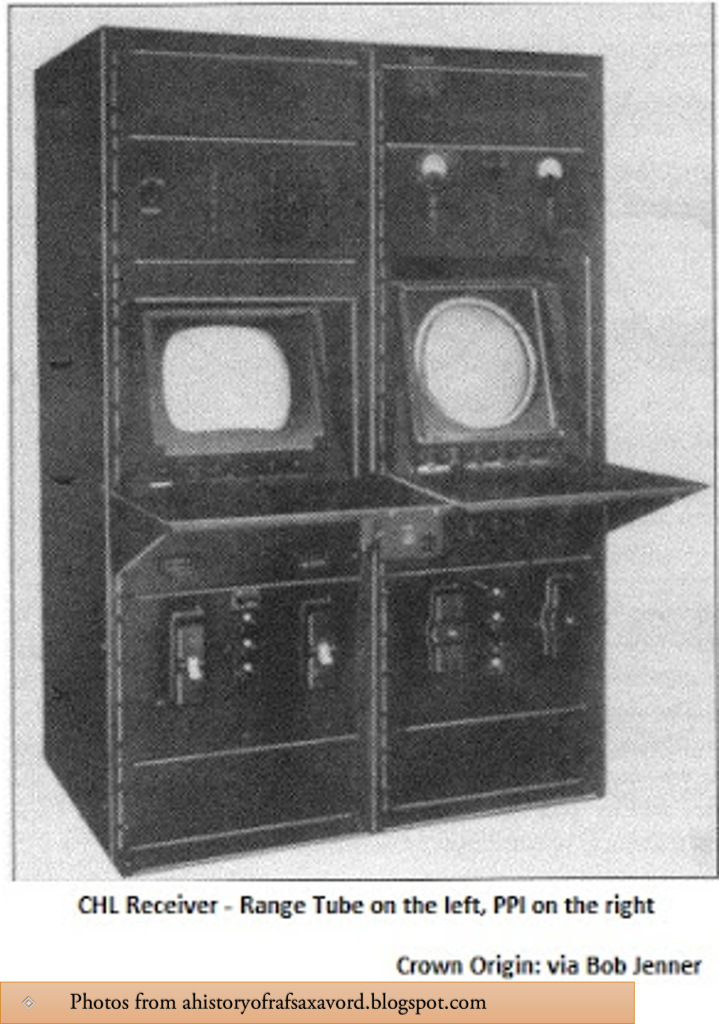
The RADAR set took a lot of electrical power and a lot of manpower, remember that the accommodation had to be increased for them. The 90KW generators, upgraded at the last minute thus causing delay, were on Decks A of each tower.
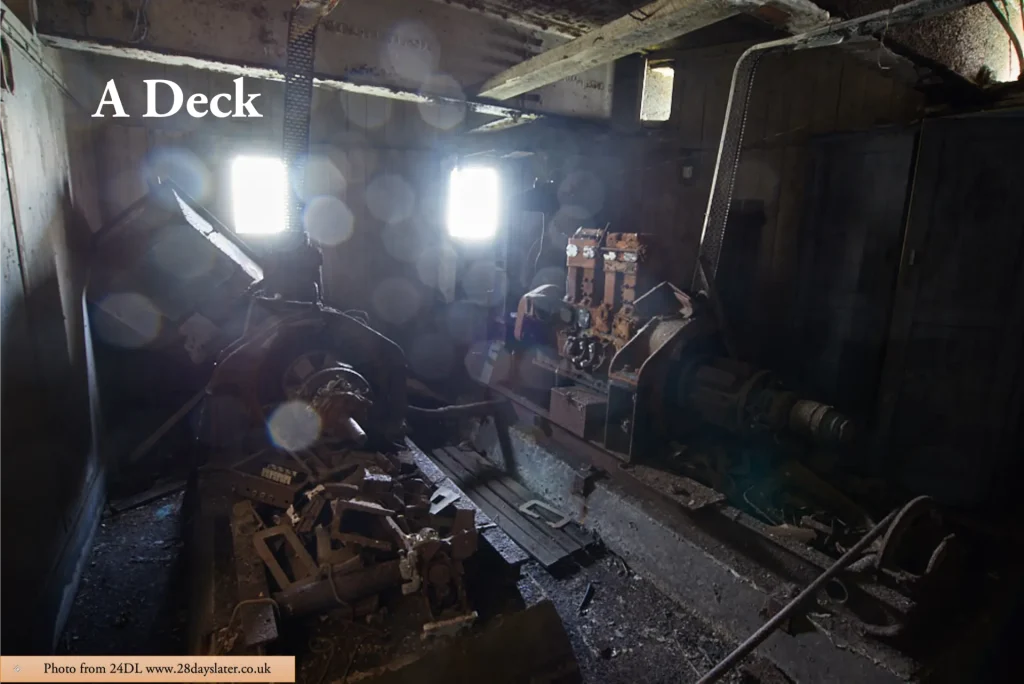
Living Conditions
Conditions for the ratings on the Forts were not good with the crew forced to spend lengthy periods in a limited space. Sport, marching, and weapons drills helped, and the crew were persuaded to take up hobbies to allay ‘Fort Madness’.
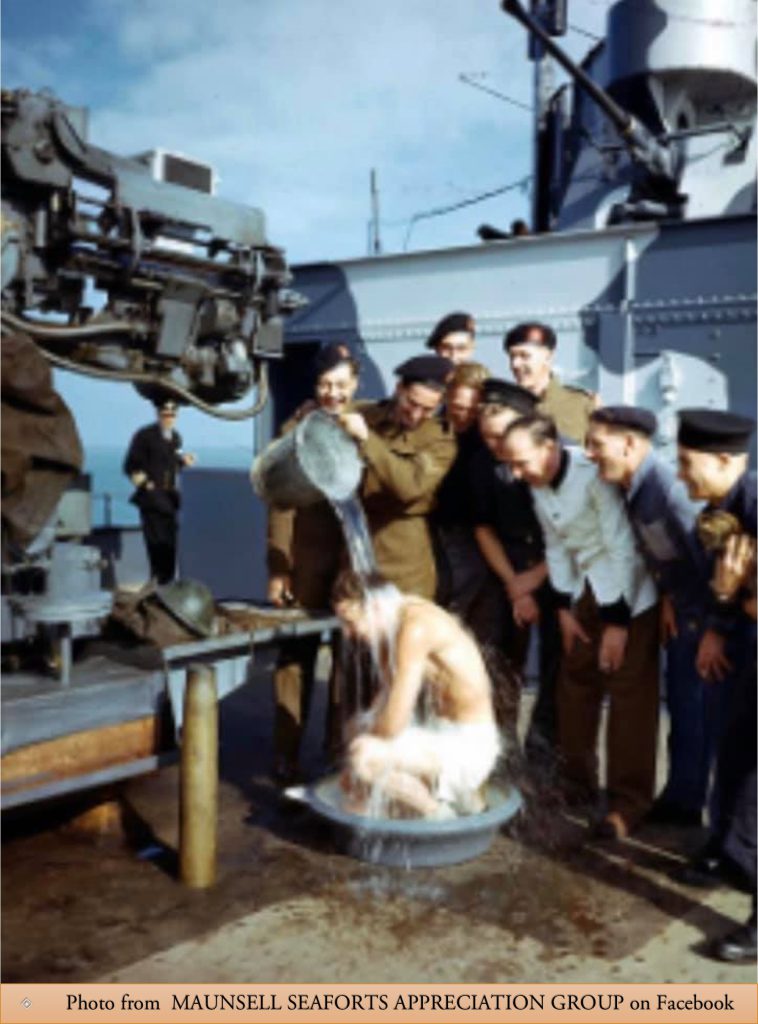
This photo is probably post-war as it is in colour and the mixed army and navy crew seem relaxed. Remember that only the officers had a bathroom.
Local Entertainment
ur side caused occasional excitement: for a time there was an evening rescue patrol made by a Motor Gun Boat (MGB) from HMS Beehive at Felixstowe. For fun the crew would speed at thirty plus knots between the legs of the tower, just clearing their eighteen-foot beam through the gap. As they had depth charges on board the tower crew decided to dissuade them by discharging the contents of the toilets as they passed under.
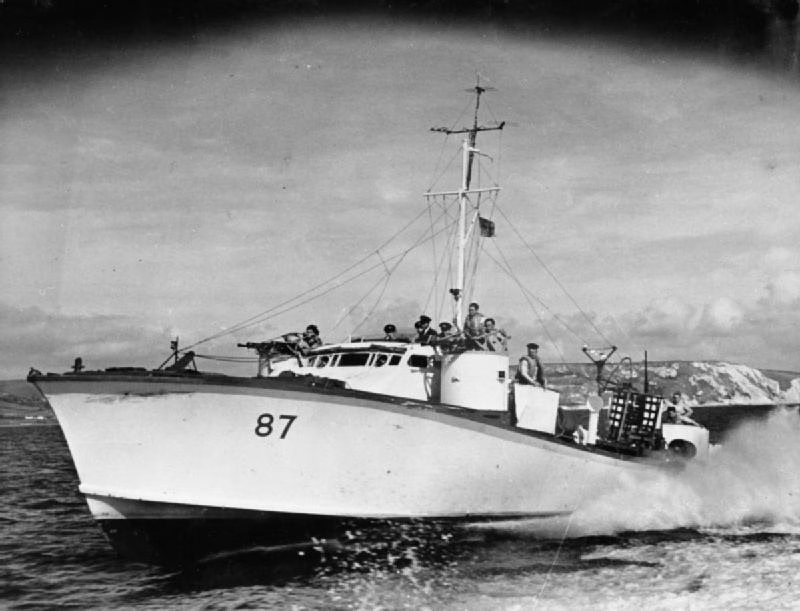
Released to Public Domain
Next Section The Grounding of Roughs Tower
Footnotes
- 1Weapons and Warfare site (site now gone?)
- 2A total of 1784 3.7″ rounds and 1217 Bofors rounds were expended – J. P. (Julian P. ) Foynes, The Battle of the East Coast (1939-1945).
Image Sources and Credits
Image Credits and Sources
- : Sealand website
- Crew-Decks-BCDE: www.28dayslater.co.uk
- Crew-Deck-Wall: www.28dayslater.co.uk
- Deck-Plan: Institute of Civil Engineer's Paper by John Posford
- : Maunsell Seaforts Appreciation Group
- G-Deck: www.28dayslater.co.uk
- : www.28dayslater.co.uk
- : Maunsell Seaforts Appreciation Group
- : www.28dayslater.co.uk
- : ahistoryofrafsaxavord.blogspot.com
- : ahistoryofrafsaxavord.blogspot.com
- : Maunsell Seaforts Appreciation Group
- Mgb_87_FL16301: http://media.iwm.org.uk/iwm/mediaLib//19/media-19623/large.jpg
- 1Weapons and Warfare site (site now gone?)
- 2A total of 1784 3.7″ rounds and 1217 Bofors rounds were expended – J. P. (Julian P. ) Foynes, The Battle of the East Coast (1939-1945).
Image Credits and Sources
- : Sealand website
- Crew-Decks-BCDE: www.28dayslater.co.uk
- Crew-Deck-Wall: www.28dayslater.co.uk
- Deck-Plan: Institute of Civil Engineer's Paper by John Posford
- : Maunsell Seaforts Appreciation Group
- G-Deck: www.28dayslater.co.uk
- : www.28dayslater.co.uk
- : Maunsell Seaforts Appreciation Group
- : www.28dayslater.co.uk
- : ahistoryofrafsaxavord.blogspot.com
- : ahistoryofrafsaxavord.blogspot.com
- : Maunsell Seaforts Appreciation Group
- Mgb_87_FL16301: http://media.iwm.org.uk/iwm/mediaLib//19/media-19623/large.jpg
